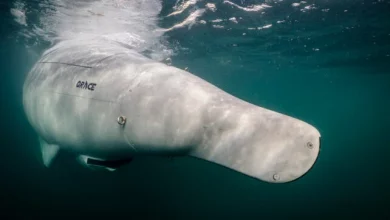Türkiye’s unmanned military ground vehicle Alpar to be showcased abroad

Leading Turkish military vehicle manufacturer, Otokar, is set to unveil variety of products at Eurosatory in Paris Monday
Türkiye’s first heavy-class military unmanned ground vehicle Alpar will be showcased abroad.
Türkiye’s leading military vehicle manufacturer Otokar will showcase a range of products at Eurosatory, Europe’s largest and one of the world’s leading defense industry fairs, starting Monday in Paris.
As part of this event, the heavy-class unmanned ground vehicle Alpar will be introduced abroad for the first time.
Designed with a maximum load capacity of 15 tons, Alpar operates silently with its serial hybrid electric drive system.
Otokar has conducted extensive engineering and qualification tests for Alpar since its introduction last year, according to information obtained by Anadolu.
Following extensive development, Alpar now includes autonomous patrol capabilities from point A to point B and vehicle tracking, alongside 2D and 3D mapping features.
Otokar continues to enhance these functions, aiming for advanced autonomy levels in the future.
Testing power on roads and terrain
Alpar, equipped with a serial hybrid power system, is undergoing mobility tests in both road and terrain environments.
These tests evaluate battery efficiency, power consumption, vehicle range, electric motor efficiency, and optimizations.
Development efforts also focus on enhancing user control and situational awareness through the Remote Control Unit.
Pointing to future unmanned systems
Unmanned military vehicles, like Alpar, are still in the development stages in advanced defense industries worldwide.
While they offer advantages in protecting personnel during dangerous missions, they are not expected to replace human decision-making on the battlefield.
Autonomous systems are likely to excel in routine tasks such as patrols and surveillance, aiming to reduce human error with artificial intelligence.
Future advancements may also integrate autonomous systems as “wing tanks” within tank teams.
Alpar to collaborate with other unmanned aerial/ground vehicles for diverse missions
It was designed with advanced battlefield requirements and the latest technology in mind.
It features modular electronics that cater to various mission needs, including reconnaissance, surveillance, and combat.
Equipped with autonomy, remote control, low thermal and acoustic signature, and agile mobility, Alpar operates alongside manned vehicles and infantry.
It excels in tasks like urban surveillance, obstacle detection, and integrating UAVs/UGVs (unmanned aerial/ground vehicles) for diverse operations.
Alpar is also capable of providing fire support, neutralizing threats, and performing autonomous missions such as patrol and target identification, while also supporting logistical activities and electronic warfare.
Identifies friend/foe, returns home
Alpar features 360-degree situational awareness and can operate up to five kilometers using MIMO (multiple-input and multiple-output) radio.
It navigates without GPS using local maps for tasks like route following, patrol, convoy duties, communication with other unmanned systems, 2D and 3D LIDAR (light detection and ranging) mapping, obstacle detection, route planning, and friend/foe identification.
Source: TRT World





